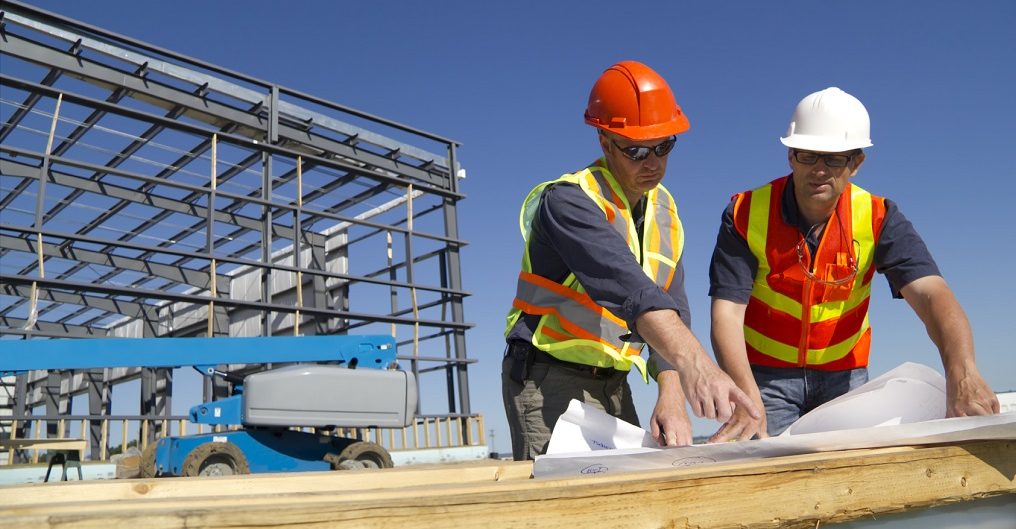Getting Buy-In for Construction Tech Adoption
Check out these tips on getting buy-in to adopt new construction technology and software to improve operations, reduce costs, and increase...

Costs are an integral part of the construction business: the industry spends money to make money. But despite some of its best efforts, considerable operating costs are making it more challenging to compete and, in some cases, undermine the quality and value of the projects delivered to clients. Coupled with this are the mounting administration costs, salaries, rent, and others that send the red marker of some companies into overdrive. An obvious solution is to reduce these operating costs to remain profitable and competitive.
Before we look at how to reduce operating costs, let’s quickly define them to put further discussions into context.
What are the operating costs in the construction industry?
Operating costs are costs incurred during the operation of an organization. These costs can be either fixed or variable. Some examples include rent, wages, utilities, administration expenses, maintenance, and repairs, to name a few.
Now, how do we reduce operating costs? Let’s look at four strategies below.
Life cycle costing (LCC) is a long-term, ongoing cost projection tool that comprehensively quantifies present and future costs associated with constructing and operating a building during its expected life. The method was initially the brainchild of the U.S. Department of Defense. It consists of a thorough analysis of three factors: cost of ownership, the discount rate applied to future costs to reflect present-day costs (net present value), and the period that these costs are applicable.
LCC's objective is to present different alternatives that ultimately reduce costs and improve the quality of the products/services offered on a construction project. The method can be applied to operating and maintenance costs, expected useful life of an equipment/building, financing costs, among others. The U.S. General Service Administration recommends having a baseline reference alternative that offers a viable system, complies with all project requirements, and presents effective design features.
Once the suggested requirements are met, the baseline should have the lowest price. The aim is to compare other alternatives by substituting designs, materials, building technologies, systems, building features, and building features that impact energy to have a holistic view of various variables and their impact on the value of the asset.
Many decision-makers are involved in the LCC process, and not surprisingly, this elevates time consumption and labor intensity. Despite these negative aspects, the method is known worldwide for its effectiveness in improving decision-making for planning, construction, and the service period of an asset. It does not use initial costs as its benchmark. The service period—where operational costs are known to reach astronomical amounts of 80-85% of life cycle costs—is directly affected by decisions made at the design phase. By making decisions in the design that ultimately add value to the building or equipment in the long-term, owners and businesses alike can foresee considerable savings.
According to research conducted by McKinsey & Company in 2018, today’s construction ecosystem is incorporating more technological innovations at every stage of a project. This is a positive shift in the right direction to address the “intractable productivity problem" that has plagued the industry for years and the high operational costs that erode profits.
But how, one asks?
With just a quick peek in the digital world, one does not have to look very far to answer this question. Take, for example, digital twin technology with drones, satellite imagery, LIDAR, and photosphere-based solutions coupled with the Internet of Things. These technological advancements make it possible to have real-time information and data that accelerate the decision-making pace, lowers the likelihood of doing rework on a design, and boosts the overall productivity of a team.
It’s not difficult to see how this plays out over time: less rework = savings, more productivity = savings, faster and more efficient decisions = savings. Overall, it's a win-win when the right technology matches with an appropriate business process through innovation.
But, let’s take it even a step further by considering a usually rudimentary activity that was once beleaguered with human error, rework, wasted time, and the lists go on: manual construction takeoff. With the use of software, the process is streamlined by automating various processes the moment the blueprint or a scanned copy of the blueprint file is uploaded, to applying price information. The result is lower operating costs, more productivity, efficiency, and better construction cost estimation.
Still curious? More information about how technology is sliding its way into the construction industry and can be found in the McKinsey & Company report and this article on how technology is reshaping the construction industry.
In the ideal world, buildings never need repair, and construction equipment doesn't need to be maintained. But that is just the perfect world. In reality, buildings do need frequent maintenance to ensure that they continue to provide added value; equipment also has to be maintained according to factory specification of another optimized plan. Both result in costs that may increase in the long-term if there aren't appropriate measures to have an effective maintenance plan.
Specific maintenance strategies should be applied to a component or its subsystems, to avoid high maintenance costs, unplanned downtime, disruption, and risks.
But where do you start knowing that you have preventative maintenance, predictive maintenance, and reliability-centered maintenance?
Construction is a large industry where both preventative and predictive maintenance are relevant. The former ensures a routine maintenance plan, while the latter on predicting equipment failure before it occurs through data gathered from equipment, sensors, vibration analysis, or a combination of all.
Reliability-centered maintenance is more complex and involves identifying failure modes for a particular system before they occur, a detailed but expensive alternative.
The choice of a particular maintenance strategy rests on the type of building and equipment under consideration. A mix of different maintenance strategies guided by a detailed plan that takes into account schedule, previous repairs, expected life cycle, manufacturer's guidelines, and cost-effective solutions reduce operating costs in the long-term.
As already covered in The Basics of Lean Construction, lean construction embodies a relationship-focused production management system that optimizes the construction process by eliminating waste. Three connected opportunities emerge from this: treating projects as production systems, impeccable coordination, and seeing projects as collective enterprises. The result is that construction waste declines with lean thinking based on five essential principles:
But how does all this affect operating costs?
San Diego Source reported savings of $13.6 million on 15 projects at the San Diego Community College District with the implementation of lean construction practices. Maintenance costs were reduced by 53% over three years, change of orders declined, some projects were executed on time, and energy consumption was reduced through target-value design. All these benefits have a direct influence on the operating costs, whether on a short-term or long-term basis.
All construction companies incur costs to remain operational. However, to stay competitive, new ways of doing business have to be adopted, implemented, and promoted.
Cost reduction cannot be resolved with a set of tools or ideas, but with a holistic approach that addresses shortcomings in construction business practices. It involves considering each activity as part of a business system and not merely an isolated part that needs to be addressed.
In doing this, steps are taken from early in the design phase to other far-reaching areas that affect the day-to-day operation of a construction business, project planning, execution, project delivery, and operation.
 Bryan Christiansen is the founder and CEO at Limble CMMS. Limble is a modern, easy to use mobile CMMS software that takes the stress and chaos out of maintenance by helping managers organize, automate, and streamline their maintenance operations. On Limble blog, you can find in-depth discussions about different maintenance strategies and tips for improving building maintenance.
Bryan Christiansen is the founder and CEO at Limble CMMS. Limble is a modern, easy to use mobile CMMS software that takes the stress and chaos out of maintenance by helping managers organize, automate, and streamline their maintenance operations. On Limble blog, you can find in-depth discussions about different maintenance strategies and tips for improving building maintenance.
Check out these tips on getting buy-in to adopt new construction technology and software to improve operations, reduce costs, and increase...
Construction cost estimating is a comprehensive calculation of direct and indirect costs, like labor and materials, to budget jobs and bid on...
Check out these tips on improving construction jobsite productivity and improving operational efficiency and how it can impact sustainable...
Check out these tips on how construction companies can improve field operations and increase jobsite productivity.
ConstructConnect empowers construction professionals with data-driven insights, market trends, and expert analysis to help you build smarter and win more work. Our blog covers preconstruction strategies, economic forecasts, tech innovations, and industry best practices. Whether you're a contractor, subcontractor, architect, or supplier, stay informed and competitive with timely, expert content. Explore our latest articles and get the insights you need to stay ahead.